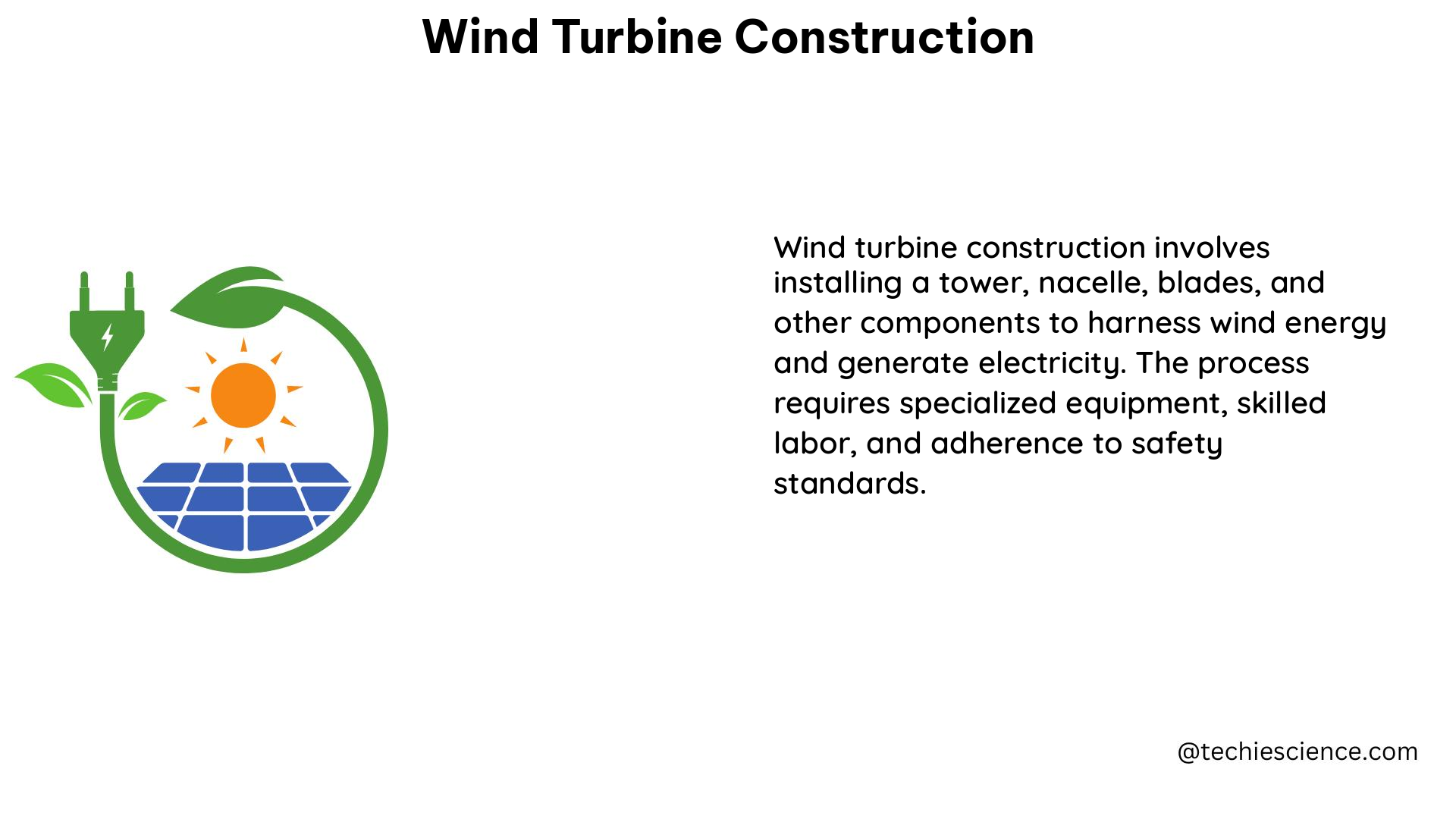Wind turbine construction is a complex and multifaceted process that involves a deep understanding of various technical aspects, from wind speed measurements to turbine specifications and economic considerations. This comprehensive guide aims to provide a detailed and practical manual for those interested in the intricate details of wind turbine construction.
Wind Speed Measurements: The Foundation of Efficient Wind Turbine Design
Accurate wind speed measurements are the cornerstone of successful wind turbine construction. Proper assessment of the wind resource at a potential site is crucial for estimating the energy production potential and ensuring the optimal placement of wind turbines.
Anemometer Calibration and Placement
- Anemometers used for wind speed measurements should be individually calibrated to ensure the highest level of accuracy.
- The separation of anemometers from the meteorological mast, booms, and other sensors should be sufficient to eliminate the influence of these structures on the recorded wind speed.
- Recommended anemometer height for wind speed measurements is typically between 50 and 100 meters, as wind speed generally increases with height.
- Factors such as terrain complexity, surface roughness, and obstacles should be carefully considered when determining the optimal anemometer placement.
Wind Speed Data Collection and Analysis
- Wind speed data should be collected over an extended period, typically a minimum of 12 months, to account for seasonal variations and long-term trends.
- Anemometers should be equipped with data loggers to record wind speed, direction, and other relevant parameters at regular intervals (e.g., 10-minute averages).
- Advanced data analysis techniques, such as Weibull distribution and wind shear calculations, can provide valuable insights into the wind resource characteristics of a site.
- Computational Fluid Dynamics (CFD) modeling can be employed to simulate the wind flow patterns and identify optimal turbine placement within a wind farm.
Turbine Specifications: Maximizing Energy Capture and Efficiency

The design and specifications of wind turbines play a crucial role in determining the overall energy production and efficiency of a wind farm.
Turbine Height and Rotor Diameter
- The average wind turbine hub height has been steadily increasing, with the majority of new installations featuring towers of 100 meters (328 feet) or higher.
- Larger rotor diameters, often exceeding 150 meters (492 feet), have become more common in recent years, allowing for greater energy capture from the wind.
- The choice of turbine height and rotor diameter is influenced by factors such as wind resource characteristics, site constraints, and economic considerations.
Turbine Technology and Components
- Wind turbines can be classified into two main types: horizontal-axis wind turbines (HAWTs) and vertical-axis wind turbines (VAWTs).
- Key components of a wind turbine include the rotor blades, nacelle (housing the generator and gearbox), tower, and foundation.
- Advancements in materials science, aerodynamic design, and power electronics have led to significant improvements in turbine efficiency and reliability.
- Innovative technologies, such as variable-speed generators, pitch control systems, and smart grid integration, have further enhanced the performance of modern wind turbines.
Turbine Siting and Array Layout
- The placement of wind turbines within a wind farm is crucial for maximizing energy production and minimizing wake effects.
- Factors such as terrain, wind patterns, and environmental considerations must be carefully evaluated during the siting process.
- Optimization algorithms and advanced modeling techniques are employed to determine the optimal turbine array layout, considering factors like energy production, wake effects, and land use.
Economic Considerations: Ensuring the Viability of Wind Energy Projects
The economic feasibility of wind energy projects is a critical aspect of wind turbine construction, as it determines the long-term sustainability and profitability of these investments.
Cost Breakdown and Financing
- The total cost of a wind energy project can be divided into several key components, including turbine procurement, installation, grid connection, and ongoing operations and maintenance.
- Economies of scale and technological advancements have led to a significant reduction in the levelized cost of energy (LCOE) for wind power in recent years.
- Various financing mechanisms, such as tax credits, government incentives, and power purchase agreements, can help improve the economic viability of wind energy projects.
Market Trends and Policy Landscape
- The global wind energy market has experienced rapid growth, with the installed capacity increasing from 17 GW in 2000 to over 837 GW by the end of 2021.
- Supportive government policies, such as renewable energy targets, carbon pricing, and feed-in tariffs, have played a crucial role in driving the expansion of the wind energy industry.
- Ongoing research and development efforts, as well as advancements in manufacturing and logistics, are expected to further reduce the costs associated with wind turbine construction and operation.
By understanding the technical intricacies, design considerations, and economic factors involved in wind turbine construction, industry professionals and enthusiasts can make informed decisions and contribute to the continued growth and success of the wind energy sector.
References:
- Best practice for accurate wind speed measurements: https://www.wind-energy-the-facts.org/best-practice-for-accurate-wind-speed-measurements.html
- High-resolution large-scale onshore wind energy assessments: https://www.sciencedirect.com/science/article/pii/S0960148121014841
- Land-Based Wind Energy Economic Development Guide: https://windexchange.energy.gov/economic-development-guide
- Wind Data and Tools | Wind Research – NREL: https://www.nrel.gov/wind/data-tools.html
- Data-Driven wind turbine performance assessment and quantification using SCADA data and field measurements: https://www.frontiersin.org/journals/energy-research/articles/10.3389/fenrg.2022.1050342/full

The lambdageeks.com Core SME Team is a group of experienced subject matter experts from diverse scientific and technical fields including Physics, Chemistry, Technology,Electronics & Electrical Engineering, Automotive, Mechanical Engineering. Our team collaborates to create high-quality, well-researched articles on a wide range of science and technology topics for the lambdageeks.com website.
All Our Senior SME are having more than 7 Years of experience in the respective fields . They are either Working Industry Professionals or assocaited With different Universities. Refer Our Authors Page to get to know About our Core SMEs.